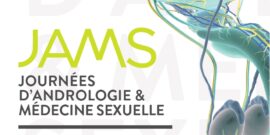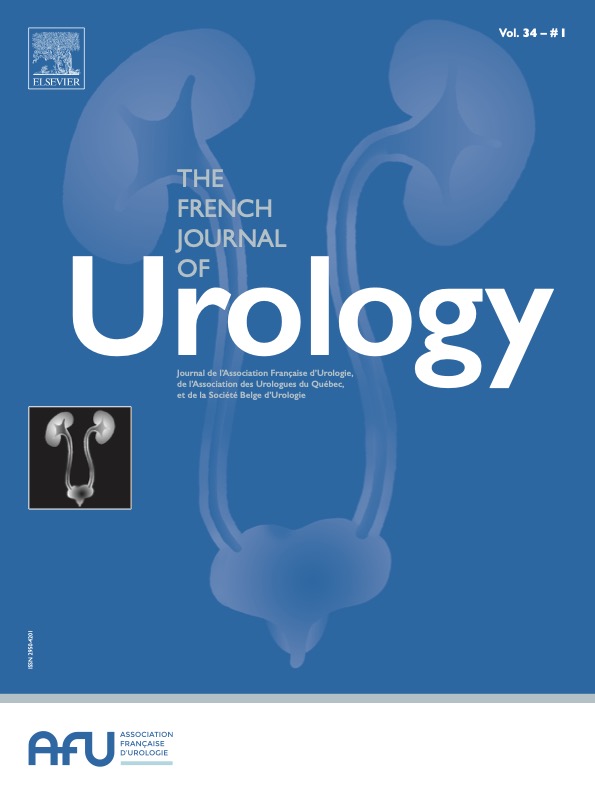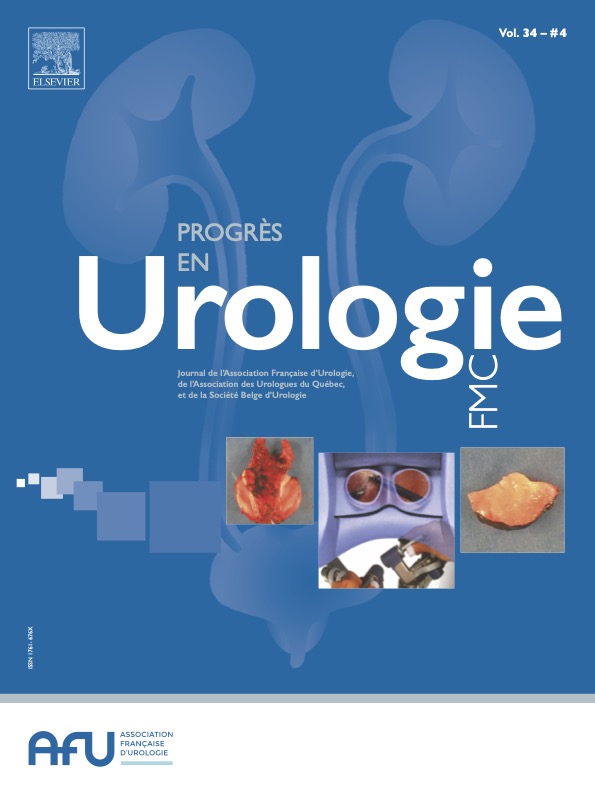This chapter is based on the EAU recommendations [1]; it has not been the subject of a systematic literature review. The recommendations are mostly similar to those of the EAU, given the absence of new data published since the EAU literature search and their consistency with the French context.
Percutaneous nephrolithotomy [2] is the standard procedure for the treatment of large (≥2cm) kidney stones. Endoscopes of various calibers are available. The choice of the technique is mainly based on the surgeon's experience. Standard access tracts ranges from 24 to 30 CH. Smaller caliber access sheaths (<18 CH) were initially introduced for pediatric use and are now increasingly used in adult population.
|
| Antibiotic prophylaxis for PCNL |
Antibiotic prophylaxis is essential in the perioperative management, particularly for PCNL procedures. Indeed, PCNL is regularly used for infection stones (struvite): 24% of staghorn stones are composed of struvite [3].
|
|
Antibiotic prophylaxis before the intervention |
Gravas et al. found an increased risk of fever after PCNL: 7.4% in the no antibiotic prophylaxis group and 2.5% in the antibiotic prophylaxis group (P =0.04) [4].
Deshmukh et al. [5] did not show any significant benefit of prolonged antibiotic prophylaxis (5–7 days before the intervention, n =30) compared with the standard antibiotic prophylaxis (<24hours, n =52). No patient (both groups) required treatment for urinary tract infection at day 3–14 post-intervention. Postoperative fever was observed in 13.3% of the patients in the prolonged antibiotic prophylaxis group compared with 9.6% in the standard antibiotic therapy group. These results have been confirmed by two other studies:
• | in high-risk patients ( n = 138) [ 6]: infection stones, ureteral dilatation, or stone size > 2 cm; |
• | in low-risk patients ( n = 86) [ 7]. |
Preoperative bacteriuria is a risk factor of infectious complications: 23.9% of postoperative fever in the bacteriuria group versus 4% in the group without bacteriuria (P <0.05) and 5% of severe sepsis versus 0.3% (P <0.01) [8].
Tao Zeng et al. [8] found an increased risk of fever and severe sepsis in the group with preoperative antibiotic therapy for ≤3 days compared to the group with preoperative antibiotic for>7 days (28.8 vs. 8.8%; P <0.05 and 4.1 vs. 0%; P <0.01, respectively).
The antibiogram concordance between the preoperative urine culture and the stone bacteriological analysis was 20% [9].
For this question, the recommendation is similar to that of the EAU given the absence of new data published since the EAU literature search and its consistency with the French context; see Recommendations “PCNL – Antibiotic prophylaxis” (Recommendation Table 1).
Contraindications to PCNL [1, 10] are:
• | coagulation disorders or unstopped anti-coagulant therapy;
|
• | untreated urinary tract infection;
|
• | potential malignant kidney tumor;
|
• | tumor in the presumptive access tract area;
|
• | pregnancy.
|
The preoperative imaging assessments are discussed in “Diagnosis – Diagnostic imaging in non-acute situations”. CT provides precise informations regarding interpositioned organs on the intended puncture path (spleen, liver, colon, pleura and lung).
Both prone and supine positions are safe and feasible.
The prone position confers some advantages, but can be proposed only if the appropriate equipment is available to place the patient correctly on the operating table. Moreover, it requires special care during patient rotation.
Most studies did not demonstrate any advantage of supine position (i.e. modified Valdivia position) in terms of operative time. The prone position offers more options for puncture and is therefore preferred for upper pole or multiple accesses [11, 12]. Supine position allows simultaneous retrograde access to the collecting system, using a flexible ureteroscope (combined treatments: endoscopic combined intrarenal surgery, ECIRS) [13]. This position is relatively easy and does not require any specific equipment.
This topic was not addressed in the EAU recommendations. The literature review identified a meta-analysis [14] and three randomized trials [15, 16, 17].
The meta-analysis, which included six randomized studies published between 1980 and 2019, showed a significant decrease in transfusion rate (RR=0.34; 95% CI [0.19–0.62]), hemoglobin loss (median difference: –0.80; 95% CI [–1.32 to –0.28]), operative time (median difference: –12.62; 95% CI [–15.62 to –9.61]), length of hospital stay (median difference: –0.73; 95% CI [–1.36 to –0.10]) in the tranexamic acid group compared with the control group [14].
In the randomized study by Kumar S.L. et al. (2013), 200 patients were randomized into the tranexamic acid group (1g of tranexamic acid at induction followed by 3×500mg per os postoperatively) and control group. Blood loss (P <0.0001), transfusion rate (P <0.018), and operative time (P <0.0001) were significantly decreased in the tranexamic group such as higher stone-free rate, and lower complication rate [15].
Nevertheless, Mohammadi Sichani R et al. (2019) did not find any significant benefit in patients receiving tranexamic acid (n =132 patients) [16].
Recently, the randomized, double-blind study by V. Batagello et al. (2022), included 192 patients assigned to the tranexamic acid group (1g tranexamic acid at induction) or to the placebo group. The study showed a decrease in transfusion rate (P =0.033), higher stone-free rate, and lower decrease in hemoglobin in the treated group. There was no significant difference in operative time and other complications [17].
The thromboembolic risk was assessed in other studies that were not specific to urologic surgery:
• | In one study, 9535 patients undergoing non-cardiac surgery were randomized to 1 g tranexamic acid at induction versus placebo. The rate of bleeding events was significantly different between groups ( P < 0.001) [ 18], with no difference for cardiovascular complications such as thrombosis or embolism; |
• | A meta-analysis of all surgery types ( n = 57 articles) found a significant difference in blood loss with 1 g of tranexamic acid (intravenous bolus at induction), but not in thromboembolic complications [ 19]. |
In conclusion, according to the literature, tranexamic acid during PCNL might decrease the risk of bleeding, the transfusion rate, and probably the operative time. In addition, tranexamic acid may reduce the overall complication rate and the hospital stay. It may also have a positive effect on the stone-free rate. The administration of tranexamic acid is associated with a low risk of complication.
Although fluoroscopy is the most common intraoperative imaging method, additional use of ultrasonography reduces radiation exposure [20, 21]. Preoperative CT and intra-operative ultrasound allows identification of the tissue between the skin and the kidney and reduce the rate of visceral injury. Calyceal puncture also can be guided by direct visualization through simultaneous ureterorenoscopy [22, 23].
Percutaneous access tract dilatation can be performed using metallic dilators, single dilators (serial), or a high pressure balloon dilatator. Although some studies demonstrated that single step dilation is equally effective as other methods and that US can be used alone for the dilatation, the difference in outcomes is most likely related to surgeon's experience rather than to the technology used [24].
|
| Caliber of the access sheaths |
A systematic review of the literature by the EAU panel on PCNL outcomes when using small-caliber access sheaths (<22 F, mini-PCNL) for kidney stone management [25] found that the stone-free rate was comparable between miniaturized and standard PCNL. Procedures performed with smaller diameter instruments were associated with significant lower blood loss, but longer operative time. There was no significant difference in other complications. Nevertheless, the size of the Amplatz sheaths and the stone types were heterogeneous, leading to a high risk of bias and confounding.
This question was not addressed in the EAU recommendations. The literature review identified two retrospective studies [26, 27].
In the first study, 110 patients (among the 307 treated) had a mercaptoacetyltriglycine (MAG3) scintigraphy before and after PCNL, 74 patients (67%) after single access tract and 36 patients (33%) after multiple access tracts. There was no significant difference in postoperative creatinine levels (P =0.09), but a significant difference in scintigraphy-based renal function (2.28% of kidney function decrease after multiple access tracts [P <0.01]) [26].
In the second study, including 178 patients treated with mini-PCNL, there was no significant difference between groups (one versus several access tracts) concerning creatinine concentration and the pre- and postoperative results of dimercaptosuccinic acid (DMSA) scintigraphy [27].
A prospective study (n =110 patients) compared creatinine and DMSA kidney scintigraphy before and at 3 months after PCNL: 170 punctures (of which 141 supra-costal: n =60 single tract, n =40 with two tracts, n =10 with three tracts). Kidney function loss increased with the number of tracts (1: 2.68mL/min, 2: 3.80mL/min, 3: 4.2mL/min; P <0.001) [28]. There was also a correlation between the transfusion rate and the number of access tracts (P <0.001).
These studies suggest that limiting the number of access tracts results in better preservation of kidney function and lower risk of complications.
Several stone fragmentation methods can be used during PCNL.
Ultrasonic and pneumatic systems are most commonly used with standard PCNL, while laser is increasingly used with mini-PCNL [29].
The difference in diameter between the Amplatz sheath and the endoscope allows a continuous flow irrigation. Adaptation of laser settings considering the stone volume and stone type can limit the risk of increased internal pressure and temperature decrease (see Laser – Utilization and Settings).
In combined treatment (ECIRS), the same laser can be used for ureteroscopy and nephroscopy.
The decision to place a nephrostomy tube at the PCNL end depends on several factors, particularly:
• | the presence of residual stones;
|
• | the likelihood of second-look procedure;
|
• | significant intraoperative blood loss;
|
• | urine extravasation;
|
• | ureteral obstruction;
|
• | potential persistent bacteriuria due to infected stones;
|
• | solitary kidney;
|
• | bleeding diathesis;
|
• | planned percutaneous chemolysis.
|
Small-bore nephrostomies seem to be associated with lower postoperative pain [30].
Tubeless PCNL is performed without a nephrostomy tube. When neither a nephrostomy tube nor a ureteral stent is introduced, the procedure is known as totally tubeless PCNL. In uncomplicated cases, the latter procedure results in a shorter hospital stay, with no disadvantages [31, 32] (Recommendation Table 2).
Ce chapitre s’appuie sur les recommandations de l’EAU [1] ; il n’a pas fait l’objet d’une stratégie bibliographique systématique. Les recommandations sont pour la plupart similaires à celles de l’EAU compte tenu de l’absence de nouvelles données éditées depuis la recherche bibliographique de l’EAU et de leur cohérence avec le contexte français.
La néphrolithotomie percutanée (NLPC) est la technique de choix pour le traitement des calculs rénaux volumineux (≥2cm). Différents calibres d’endoscopes sont disponibles. Le choix de la technique est principalement basé sur l’expérience du chirurgien. Les gaines d’accès standard sont de 24 à 30 CH. Des gaines d’accès de plus petit diamètre (<18 CH), ont été initialement introduites pour un usage pédiatrique et sont maintenant de plus en plus utilisées dans la population adulte (mini-NLPC).
|
| Antibioprophylaxie pour NLPC |
La gestion de l’antibioprophylaxie est essentielle dans la stratégie périopératoire des calculs, en particulier en ce qui concerne la NLPC. En effet, parmi les calculs traités par NLPC la part des calculs infectieux (struvite) est importante : 24 % des calculs coralliformes sont composés de struvites [2].
|
|
ECBU préopératoire stérile |
Gravas a mis en évidence un risque accru de fièvre après une NLPC : 7,4 % pour le groupe sans antibioprophylaxie contre 2,5 % pour le groupe antibioprophylaxie (p =0,04) [3].
L’étude de Sameer Deshmukh [4] n’a pas mis en évidence de bénéfice significatif à une antibioprophylaxie prolongée (5 à 7jours préopératoire, n =30) par rapport à une antibioprophylaxie classique (<24 h, n =52) : aucun patient des 2 groupes n’a eu besoin d’un traitement pour une infection urinaire à 3–14jours postopératoires ; une fièvre postopératoire a été observée chez 13,3 % du groupe « antibioprophylaxie prolongée » contre 9,6 % du groupe « antibiothérapie classique ». Ce résultat est confirmé par 2 autres études :
• | chez des patients à haut risque ( n = 138) [ 5] : calculs infectieux, dilatation urétérale ou taille du calcul > 2 cm ; |
• | chez des patients à faible risque ( n = 86) [ 6]. |
La présence d’une bactériurie préopératoire est un facteur de risque : 23,9 % de fièvre postopératoire contre 4 % en l’absence de bactériurie (p <0,05) et 5 % de sepsis sévère contre 0,3 % (p <0,01) [7].
L’étude de Tao Zeng et al. [7] décrit une augmentation du risque de fièvre et de sepsis sévère dans le groupe antibiothérapie préopératoire≤3jours par rapport au groupe antibiothérapie>7jours préopératoire : 28,8 vs 8,8 % ; p <0,05 et 4,1 vs 0 % ; p <0,01, respectivement.
La concordance de l’antibiogramme entre l’ECBU préopératoire et l’analyse bactériologique du calcul est de 20 % [8].
Pour cette question, la recommandation est similaire à celle de l’EAU compte tenu de l’absence de nouvelles données éditées depuis la recherche de l’EAU et de sa cohérence avec le contexte français (Tableau de recommandations 1).
Les contre-indications à la NLPC sont [1, 10] :
• | des troubles de la coagulation non corrigés ou en cas de traitement anticoagulant non arrêté ;
|
• | une infection urinaire non traitée ;
|
• | une lésion rénale ou calicielle tissulaire sur le trajet de ponction ;
|
• | la grossesse.
|
Les évaluations d’imagerie préopératoire sont résumées dans le chapitre L’utilisation de la TDM permet de fournir des informations précises sur les organes en regard du trajet de ponction prévu (la rate, le foie, le côlon, la plèvre et le poumon) dans l'article "RECOMMANDATION 2022 DU COMITÉ LITHIASE DE L’AFU : Diagnostic".
|
| Positionnement du patient |
Les positions en décubitus ventral et dorsal sont toutes deux sûres et envisageables.
La position ventrale confère certains avantages mais dépend de la disponibilité d’un équipement approprié pour positionner correctement le patient sur la table opératoire et nécessite une attention toute particulière pendant le retournement du patient.
La plupart des études n’ont pas montré un avantage de la NLPC en décubitus dorsal surélevé (dite position de Valdivia modifiée) en termes de durée d’intervention. La position ventrale offre plus d’options pour la ponction et est donc préférée pour les accès au pôle supérieur ou les accès multiples [11, 12]. Le décubitus dorsal permet un accès rétrograde simultané au système collecteur, en utilisant un urétéroscope flexible (traitements combinés : ECIRS) [13]. Cette installation est relativement aisée et ne nécessite pas de matériel spécifique.
|
| Utilisation de l’acide tranexamique |
Cette question n’a pas été traitée dans la recommandation de l’EAU. La stratégie bibliographie a permis d’identifier une méta-analyse [33] et 3 essais randomisés [11, 12, 13].
La méta-analyse, incluant 6 études randomisées publiées entre 1980 et 2019, montre une diminution significative du taux de transfusion (RR=0,34 ; 95 % IC [0,19–0,62]), de la perte d’hémoglobine (MD=–0,80 ; 95 % IC [–1,32 à –0,28]), de la durée opératoire (MD=–12,62 ; 95 % IC [–15,62 à –9,61]), de la durée moyenne de séjour (MD=–0,73 ; 95 % IC [–1,36 à –0,10]), avec l’acide tranexamique par comparaison au groupe contrôle [33].
Kumar S.L. et al., 2013 [15], ont randomisé 200 patients en 2 groupes, avec administration de 1g d’acide tranexamique à l’induction, suivie de 3 doses per os de 500mg en postopératoire : ils ont noté une diminution significative des pertes sanguines (p <0,0001), du taux de transfusion (p <0,018) et de la durée opératoire (p <0,0001), un meilleur taux de SFR et une diminution du taux de complications [11].
Mohammadi Sichani R et al., 2019 [16], ont randomisé 132 patients mais n’ont pas trouvé de différence significative entre la prise ou non d’acide tranexamique [12].
Enfin une étude de V. Bagatello et al., 2022 [17], randomisée, en double aveugle, sur 192 patients avec 2 groupes (1g d’acide tranexamique à l’induction, contre placebo) a montré une diminution du taux de transfusion (p =0,033), un meilleur taux de SFR et une moindre baisse du taux d’hémoglobine dans le groupe traité. Il n’y avait pas de différence significative sur le temps opératoire et les autres complications [13].
Le risque thromboembolique a été évalué dans d’autres études qui sont toutefois non spécifiques de l’urologie :
• | une étude a randomisé 9535 patients ayant une intervention hors chirurgie cardiaque, avec 1 g d’acide tranexamique à l’induction contre placebo. Il existe une différence significative sur le taux de saignement ( p < 0,001) [ 14]. Aucune différence sur le taux de complication cardiovasculaire, notamment à type de thrombose ou d’embolie, n’a été observée ; |
• | une méta-analyse sur tout type de chirurgie (57 articles retenus) montre l’efficacité sur les pertes sanguines avec des différences significatives, et pas de différence sur les complications de type thromboembolique [ 15]. Les doses retrouvées sont 1 g d’acide tranexamique en bolus intraveineux à l’induction. |
D’après la littérature, l’utilisation de l’acide tranexamique pendant la NLPC aurait un donc intérêt pour diminuer le risque de saignement, le taux de transfusion et éventuellement la durée opératoire. En outre, son utilisation diminuerait le taux global de complication et la durée d’hospitalisation. Elle pourrait avoir un impact positif sur le taux de SFR. L’administration de l’acide tranexamique présente également peu de risque.
La fluoroscopie est la technique d’imagerie peropératoire la plus courante mais l’utilisation concomitante de l’échographie permet de réduire l’exposition aux radiations [16, 17]. La TDM et l’échographie peropératoires permettent d’identifier les organes entre la peau et le rein et de réduire l’incidence des lésions viscérales. La ponction dans le fond caliciel peut également être guidée par la visualisation directe à l’aide d’un URSS simultanée [18, 19].
La dilatation du trajet percutané peut être réalisée à l’aide de dilatateurs métalliques, de dilatateurs simples (en série), ou d’un ballon haute pression. Bien que certains articles montrent que la dilatation monophasique (un seul dilatateur) est aussi efficace que les autres méthodes et que l’échographie peut être utilisée seule pour contrôler la dilatation, la différence de résultats semble liée à l’expérience du chirurgien plutôt qu’à la technologie utilisée [20].
|
| Calibre du tunnel d’accès |
Une revue systématique de la littérature a été réalisée par le panel de l’EAU pour évaluer les résultats de la NLPC utilisant des gaines d’accès de petit calibre (<22 F, mini-NLPC) dans le traitement des calculs rénaux [21]. Le taux de SFR était comparable entre les accès miniaturisés et les NLPC standard. Les interventions réalisées avec des instruments de plus faible diamètre avaient tendance à être associées à une perte sanguine significativement plus faible mais à une durée d’intervention plus longue. Il n’y avait pas de différence significative pour les autres complications. À noter que la taille des gaines d’Amplatz utilisées et les types de calculs traités étaient hétérogènes induisant un risque de biais et de confusion élevé.
Cette question n’a pas été traitée dans la recommandation de l’EAU. La stratégie bibliographie a permis d’identifier 2 études rétrospectives [22, 23].
Dans la 1re étude, 110 patients (sur 307 traités) ont eu une scintigraphie Mag avant et après NLPC, 74 patients (67 %) après trajet unique, 36 patients (33 %) après trajets multiples. Il n’a pas été constaté de différence significative sur les dosages postopératoires de créatinine (p =0,09) mais une différence significative sur la fonction rénale basée sur la scintigraphie avec 2,28 % de perte de fonction rénale après trajets multiples (p <0,01) [22].
Dans une 2e étude, sur 178 patients traités par miniNLPC, il n’a pas été observé de différence significative entre les groupes (1 trajet contre plusieurs trajets) sur la créatinine ni sur la scintigraphie DMSA pré- et postopératoire [23].
Une étude prospective a comparé la créatinine et la scintigraphie rénale au DMSA préopératoire et à 3 mois postopératoire sur 110 patient : 170 ponctions (dont 141 supracostale : 60 trajets uniques ; 40 avec 2 trajets ; 10 avec 3 trajets). Il a été observé que la perte de fonction rénale augmentait avec le nombre de trajets (1 : 2,68mL/min, 2 : 3,80mL/min, 3 : 4,2mL/min ; p <0,001) [24]. Il existait également une différence significative sur le taux de transfusion, avec la multiplication du nombre de ponctions (p <0,001).
Ces études suggèrent que la limitation du nombre de trajets de ponction permet une meilleure préservation de la fonction rénale et une diminution du risque de complications.
Il existe plusieurs méthodes de fragmentation du calcul pendant la NLPC.
Les systèmes par ultrasons et systèmes combinés avec les systèmes pneumatiques/balistiques sont le plus souvent utilisés pour la NLPC standard, tandis que le laser est de plus en plus utilisé pour la mini-NLPC [25].
La différence de diamètre entre la gaine d’Amplatz et le néphroscope permet un écoulement continu du liquide d’irrigation, et autorise l’utilisation de paramètres Laser de haute puissance selon le volume des calculs à traiter en limitant le risque d’hyperpression cavitaire et d’augmentation de la température .
Pour le paramétrage laser des endoscopes flexibles en NLPC, on rejoint celui de l’urétéroscopie (cf. RECOMMANDATION 2022 DU COMITÉ LITHIASE DE L’AFU : LASER - UTILISATIONS ET PARAMETRAGES).
La décision de placer ou non une sonde de néphrostomie à la fin de la NLPC dépend de plusieurs facteurs, notamment :
• | la présence de calculs résiduels ;
|
• | la probabilité d’une révision rénale ;
|
• | une perte sanguine peropératoire significative ;
|
• | l’extravasation d’urine ;
|
• | l’obstruction urétérale ;
|
• | la persistance de fragments de calculs infectés avec relargage de germes ;
|
• | le rein unique ;
|
• | le ponction hémorragique ;
|
• | une chimiolyse percutanée planifiée.
|
Les sondes de néphrostomie de petit calibre semblent présenter des avantages en termes de douleur postopératoire [26].
Il est admis que la NLPC peut être réalisée sans sonde de néphrostomie voire sans sonde de néphrostomie ni sonde urétérale (NLPC sans drainage). Dans les cas simples, cette option permet de raccourcir le séjour hospitalier, sans majoration des complications, tel que suggéré par 2 méta-analyses [27, 28] (Tableau de recommandations 2).
The authors do not have competing interest except F. Panthier with Dornier.









